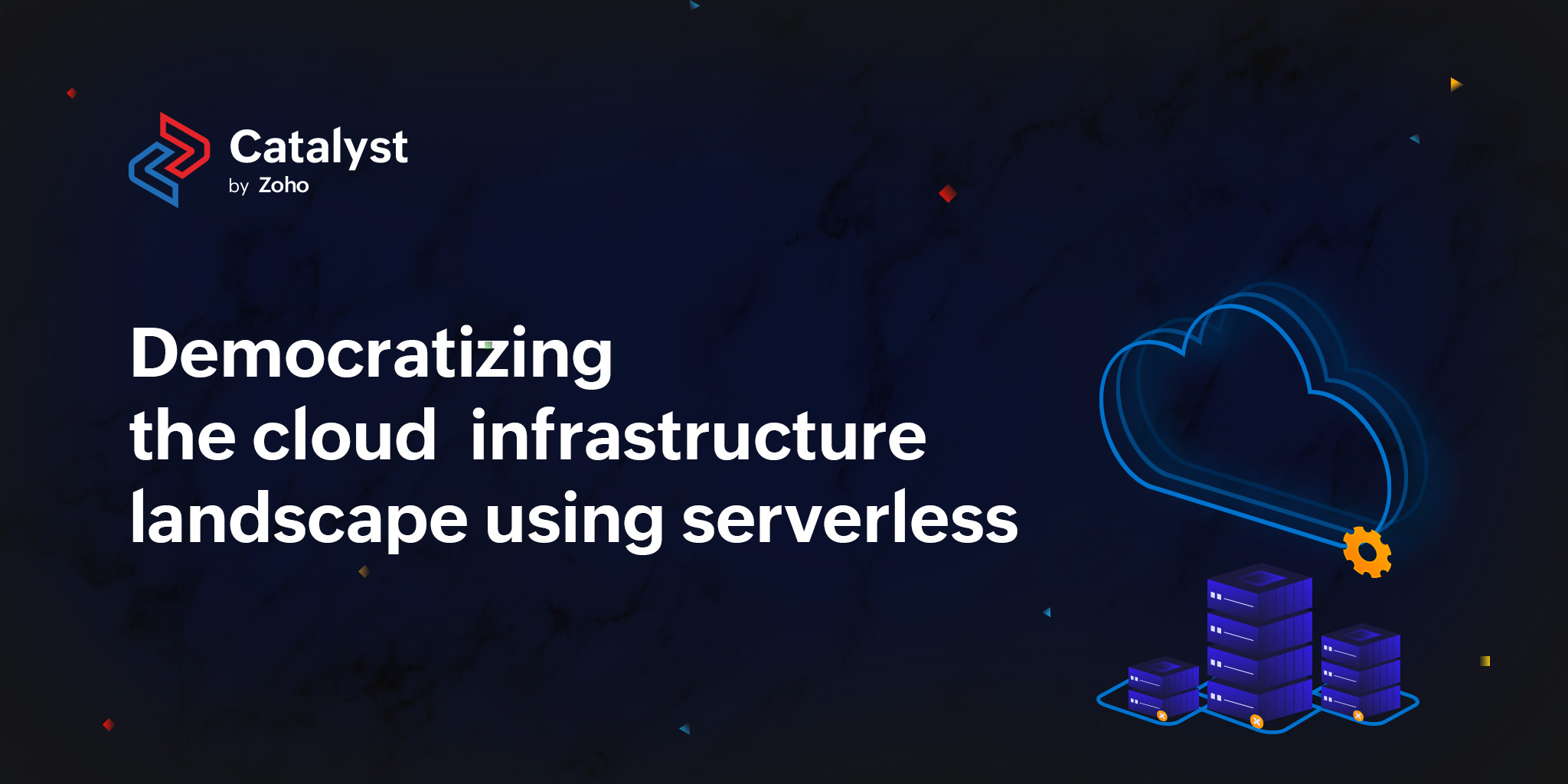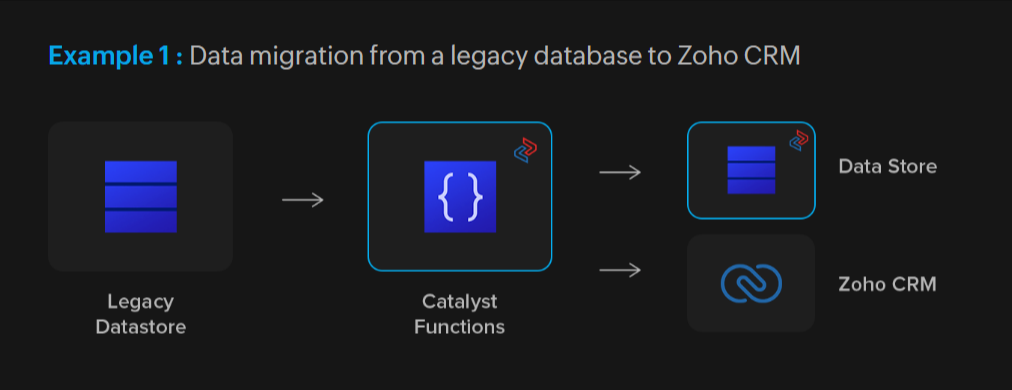- HOME
- Democratizing the cloud infrastructure landscape using serverless
Democratizing the cloud infrastructure landscape using serverless
- Last Updated : October 10, 2023
- 565 Views
- 5 Min Read

This is an article by Ganesh Thiyagaraj—the special mention winner of Blogathon contest.
Every time a new technology emerges, it will inevitably attract both supporters and detractors. Serverless computing is one such technology. As the name implies, the major purpose of serverless technology is to abstract server management from cloud computing, allowing users to focus entirely on application development and generating more commercial value. Customers also only have to pay for what they use, rather than keeping their computing resources on-site. It also lets customers pay as they go for their computing resources, and there is no need to manage and maintain servers on-premises.
Of course, no technology is "one-size-fits-all" for any organization. Despite myths that serverless is not secure and involves a steep learning curve, an increasing number of companies are implementing serverless architecture. Furthermore, as serverless products improve, the technological barrier will be broken, making it easier for organizations to adopt it.
Using tools like application performance monitoring, you can mitigate the risks associated with the absence of understanding of backend logic and challenges with testing and debugging.
Here are a few reasons why Serverless is democratizing the existing cloud infrastructure:
—Increases the inclusiveness, scalability, and profitability of your firm
—Allows you to get secure operations without having to worry about data storage laws
—Reduces cost and enables you to develop world-class products at a lower price, which in turn increases the worth of your company and your profits.
—Helps you improve customer satisfaction while streamlining operations and lets you run operations and management efficiently
A break-down of business software landscape
Business tools have been in existence right from the time computers started being mass -produced. We have traversed through multiple internet eras, each giving rise to different ways we use computers for our daily activities.
In the early days, we were required to have software installed on our personal systems and all files accessed from only that same system. Tally, for example, was used by most SMBs and Enterprises for their accounting and booking. And all the accountants could only access it from the system where all programs were installed and files were saved. One would have to manually transfer data either by pen drives or other means to view it on a different system, and the pricing model was a one-time payment for owning that version of the software for life. Not to mention, the storage space was also confined to the hardware one could afford.
Next came the era of cloud software, with options like Xero, Quickbooks, and Zoho Books, enabling users to access files from any device with an internet connection. These pieces of software provided a monthly, half-yearly, or annual subscription model with unlimited file storage space on the cloud as long as you are paying the subscription. While we are still very much in the cloud software era, we are already seeing serverless as the next big thing. The serverless platforms enable businesses and individuals to build custom solutions tailored to their requirements with pay-as-you go models. No more commitments or flat pricing for services that you may or may not use to its maximum potential. The pricing model allows freelancers and software companies to express and demonstrate their ideas to larger audiences.
Reasons why businesses should adopt Serverless
As businesses face a difficult economic climate, it's important to reassess their business models and ambitions in order to stay afloat and become mainstream players. Traditional businesses and enterprises must adapt to the evolving technology landscape, and make technology developments a priority. With this in mind, many businesses are considering adopting the serverless approach: 36 percent of organizations have declared that they are analyzing serverless since the beginning of 2019.
Breaking the monolith and adopting serverless technology to build and host applications will turn your ideas into innovations. According to IT decision-makers and experts, businesses should embrace innovations or discuss their path to modernization using a serverless platform. Why? Businesses will become more nimble, giving consumers an improved experience. Due to this, executives rethink their business models and invest in a transformation that enables them to move beyond data management, upgrade their core infrastructure, migrate to the cloud, and profit.
Serverless has applications in every company industry, from FinTechs to eCommerce behemoths. Serverless architecture is ideal for a startup that wants to iterate quickly, since it breaks down huge applications into self-contained functional parts.
Big companies that use serverless architecture can develop new services faster and with less vendor lock-in. With cloud management, you can operate your apps in any cloud, hybrid, or multi-cloud environment while remaining in control. Serverless enables businesses to make changes rapidly, respond to client requests, and take advantage of the newest trends in innovative solutions.
Use cases
These days, buyers and agents alike are turning to their phones and tablets to browse listings when they're looking for a property. Technology plays a significant role in how both consumers and industry professionals approach the real estate market, but it's just the tip of the iceberg. Today's technology in real estate offers plenty of opportunities for both residential and commercial properties
Picture a fictional real estate agency called Agency X. A regular day in their office starts with collecting leads from different sources, calling prospects, setting up meetings (virtual or offline), negotiation, and quote sharing, followed by lead closure. Making an agent shift platforms and manually dial numbers can get time-consuming and increase risks for data errors. Agency X decides to automate the process to get more productive and increase ROI. How do they do it? Start with Catalyst functions to pull data from different sources into their CRM and their agents can get started directly with meaningful business!
As an example, you can integrate a function with Zoho CRM by building it as a simple microservice using Catalyst Basic I/O Functions. By creating a workflow rule with a webhook, this can be accomplished. Visit the help page for more information.

In another scenario, consider a freelancer looking to build a hyper-local food delivery app, enabling deliveries in under 10 mins. They need to gather contact details and offerings from all the vendors in a given areacode. Every time a buyer is looking to make a purchase in that locality, all the relevant store details around them should be available. Well, with a Sandbox environment like Catalyst, they can get to action without the worries of buying or maintaining server spaces and jump start by building a prototype.
The developer can create a project on Catalyst and start developing the local food delivery application. Using Data Store the developer can create and manage contact details and offerings as database tables. File Store will help the developer store and organize the application files using folders.
At the compute stage, the developer can create, test, and deploy server-side functions. Catalyst Circuits will help the developer develop design workflows and orchestrate functions to create resilient business critical tasks. Using Catalyst API Gateway the developer can create, invoke, maintain, and monitor user requests.
Note that they will not be charged a penny till their app goes live and they can show a fully functioning prototype to their potential investors to get funded.
Try and test Catalyst—the simplest serverless platform to build web-applications, and more. Check out these catalyst-tutorials to help you get started.